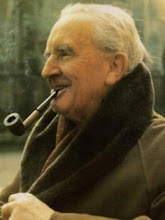
A very happy Easter to all my readers! I wish you all the blessings, both temporal and spiritual, in the Risen Lord in this most exquisite Paschaltide. I have returned from a very decent Triduum, although I am very tired because of it - travelling around incessantly, standing, kneeling etc for long, in some cases very long, liturgies, and despite not having fasted per se (I twice had lunch in the pub, but I thought I'd benefit more from the energy rather than fasting and then fainting at some point), I was starving hungry for most of it. I had time in the end to attend Pontifical Mattins and Lauds among the Russians but decided against going, both because I was physically exhausted and because a friend offered me a lift home, which I gratefully accepted. I overslept this morning!
Anyway, enough about my health. Unfortunately I am not able to give a full account of the days, for two reasons. I do not know enough about Eastern Liturgy to do so, and...well, when we get to it in the Synopsis of the Narn i Chîn Húrin, imagine the return of the brothers Húrin and Huor to their father Galdor in Dor-lómin...
I noticed, on Good Friday at the Russian Cathedral, many oddities compared with traditional Western Liturgy. A host of Alleluias (but then, I think the Alleluia was only suppressed during Lent and Passiontide in the West in the 11th century - which is, incidentally, something I approve of - it adds a certain rhythm to the liturgical cycle of prayer, rejoicing in good season, silence in times of penance), many people were making the Sign of the Cross in the real traditional way, that is, signing oneself with the index and middle fingers, representing the Two Natures in Christ, and with the ring and little fingers joined to the thumb, rather than the modern Greek praxis of joining the index and middle fingers to the thumb. I do this myself, except I do it according to the Western order - from left to right rather than right to left. You see this fashion in traditional Iconography, and in Western statues of Our Lord imparting blessing. The vestments were exquisite, although in the dim light the colour could not easily be determined (although the Easterners do not really have a system of liturgical ''colours'' as in the West), and present were two Bishops, the Protodeacon incensing the image of the Lord constantly, four priests (gathered around the two Bishops like pluvialistae around the Celebrant at Vespers during the Chapter), two taper-bearers (? I think this is what they were; they were bearing those triple candles and standing either side of the image of our Crucified Lord), and a young server. The solita oscula was not omitted when handing things to and taking them from the Bishop...I am being ignorant, confessedly, but these small things make me prefer traditional Western Liturgy even more. Eastern Liturgy changes little throughout the year (except the Readings), and I like the changes that happen in the Western liturgical year, in tempora opportuno etc.
My parents are both at work today, so I have been on my own since I got in from Mass, but the day has been lovely so far. I much prefer the Vidi Aquam to the Asperges. I am going now to have some well-deserved (I think I deserve it anyway) repose, reading, catch up on various things etc. Back to work Tuesday...sigh...

Patricius,
ReplyDeleteRussians do use a colour sequence in current praxis. In Holy Week green for Palm Sunday, black for Lent and the first three days of Holy Week, violet for Great Thursday, black for Great Friday and black, with a colour change to white, at the 'Vigil' on Great Saturday morning.
The 'triple candles' you observed were the pontificalia of 'trikeri' and 'dikeri' - a three-branched and two-branched candle respectively which are used to give blessings by a bishop (or very, very, exceptionally by stratospherically privileged priests). These are carried by subdeacons. In any hierarchical liturgy the preists, in order of seniority assist the bishop(s) - there is a parallel with the Canons 'making the circles' in Pontifical ceremonies in the Roman rite. In the Roman rite 'pluvialistae' are generally lower ranking persons.
A blessed Pascha to you. Khristos Voskresie!
Ahh the peritus returns...
ReplyDeleteI did observe the Bishop giving the blessing with the triple candles. I took some photos on my iTelephone but because of the dim light they didn't come out well. I also noticed the Protodeacon made the sign of the Cross with his stole.
A blessed Pascha to you also.
A blessed Easter and Paschaltide to you from far-away Kansas. Surrexit Dominus vere, alleluia! (The "A" word returns!)
ReplyDelete